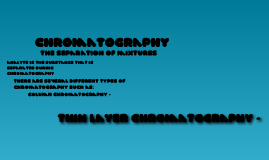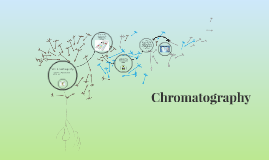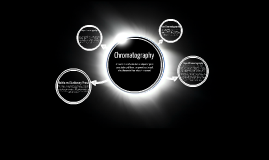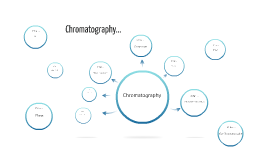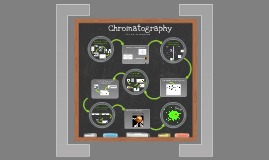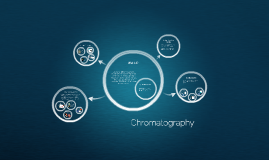Chromatography
Transcript: *chromatography used for identification of substances *drug testing, blood alcohol testing. *provides faster runs and better separations *uses: monitor progress of reaction, determine purity, analyze dye composition of fibers in forensics burns gas when leaves, produces electron charge of ions ions detected to identify substance similar to lab with colored flames able to identify if traces of alcohol present in the blood *liquid or gas *moves faster than stationary phase *polarity of a substance determines which phase it is attracted to *differences in speed separates the mixture Gas chromatography: By: Jasmine Lai, Alice Lee, and Quimby Lee *solid *moves slower "Thin Layer Chromatography." Wikipedia. N.p.: n.p., 2013. Wikipedia. Web. 22 May 2013.<http://en.wikipedia.org/wiki/Thin_layer_chromatography> Forensics: application of science and technology to investigate facts of interest in relation to criminal or civil law FID: Flame Ionization Detector "Gas Chromatography." Gas Chromatography. Sheffield Hallam Univeristy. Web. 14 May 2013. <http://teaching.shu.ac.uk/hwb/chemistry/tutorials/chrom/gaschrm.htm>. Director of San Mateo Police Department Forensics Laboratory Barone, Patrick T. "Gas Chromatography in DUI Cases – Theory and Operation." Criminal Law Blog. James Publishing, 12 Nov. 2009. Web. 22 May 2013. <http://jamescriminallaw.wordpress.com/2009/11/12/gas-chromatography-in-dui-cases-%E2%80%93-theory-and-operation/>. Thin Layer Chromatography Gas chromatography uses something called a "column" contains a stationary bed within a tube sometimes in a coil molecules are passed through and the elute comes off at different times Used together with mass-spectometry a machine that separates molecules into ionzed fragments uses mass of fragments to charge ratio GC-MS: The history of gas chromatography: Clark, Jim. "The Mass Spectrometer." Chemguide. N.p., n.d. Web. 22 May 2013. <http://www.chemguide.co.uk/analysis/masspec/howitworks.html>. stationary phase vs. mobile phase Background Information Works Cited: "Chromatography." Wikipedia. N.p.: n.p., 2013. Wikipedia. Web. 22 May 2013. <http://en.wikipedia.org/wiki/Chromatography> *performed on a sheet of glass plastic or aluminum foil *surface covered with an absorbent material (stationary phase) *plate is heated *solvent drawn up plate using capillary action Interviewee: Relation to TV: CHROMATOGRAPHY Gas chromatography was invented by Mikhail Semenovich Tswett in 1903 in 1947 Fritz Prior developed solid state gas chromatography Erika Cremer laid the ground work for Fritz Prior's developments headspace chromatography: substance is first vaporized into “headspace” the vapor is put through the same process of gas chromatography when substances leave the column they are put into a flame Tissue, Brian M.. "CHP." Gas Chromatography. N.p., 23 May 2013. Web. 22 May 2013. < http://www.files.chem.vt.edu/chem-ed/sep/gc/gc.html>. Blood Alcohol Testing carrier gas (nitrogen, helium, argon) is used to push the gaseous sample through the column can also be used to help clean out the columns when finished Two types of columns: packed or capillary/open tubular packed: solid support material coated with a liquid. diameter: 2-4 mm capillary: coated with support material or liquid stationary phase. diameter: few tenths of a mm. - Director of San Mateo Police Department Forensics laboratory Alex Karagianes






